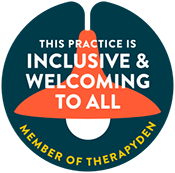As a child psychologist, I’ve seen how the digital age reshapes childhood, offering opportunities and risks. Drawing from Jonathan Haidt’s The Anxious Generation and decades of research, this guide provides practical, evidence-based strategies to manage screens and social media while prioritizing your child’s mental health.
Using the 5-Point Scale for Emotions Expression and Management
When emotions are high and coping skills have flown from memory, what is a person to do? Use the trusty five point scale, that’s what!
A simple five point scale can be an invaluable tool at home for the whole family, as well as at school for kids! The scale provides common language a family (or classroom) can share to better communicate, especially around difficult things like emotions identification and expression. It assists in making emotion a more concrete and understandable concept. Additionally, it provides modeling opportunities for parents or teachers, as well as making coping strategies readily available.
A five point scale can also assist children in developing personalized coping strategies and dealing with strong emotions.

So how does it work? Simple. First you need to create your scale and fill it out.

List emotions that might fit or describe each number. For example, you might write calm beside one, maybe frustrated or down for two, maybe furious or terrified for five, and so on. Then in the column beside that, come up with personalized strategies that help you when you are experiencing an emotion at that numbered level. Strategies could look like: listening to music, going for a walk, drawing, being alone, moving to a particular room or space, calling a certain person, etc., and should be specific to the individual. It may take some time to gather or try out strategies but having them centrally located later will be invaluable.
When first introducing the concept, just for some practice, you could try scaling characters’ feelings during a show, or role play some situations and practice scaling those. Once everyone has the idea, you can move on to “real life” scenarios as they arise. Below are some examples of ways a parent could use the scale moving forward.
Example #1
A parent using the scale to help an angry child might look like this::
Parent to angry child: “It looks like you might be feeling kind of angry. Can you tell me how angry you are using your five point scale?”
Child points to a 4
Parent: “Oh….so very angry then. I’m so glad you told me. Let’s see what your five point scale suggests for strategies (reference the strategies for number 4 and ask the child which one they might like to try first).”
Example #2
An example of a parent modeling might look like this:
Angry parent: “Dad is feeling really upset and is at a 5 right now. I am going to take a break and use my strategies to get back down to a 1 or 2 and then we can talk about it.”
This scale and ideas are based on: The Incredible 5-Point Scale by Buron & Curtis
Follow us for more wellness content!
More Blog Posts

Navigating the Digital World: A Guide to Screens and Your Child’s Well-Being

Harnessing Brain Plasticity for Kids with ADHD
Parenting a child with ADHD is challenging, but their brain’s plasticity—its ability to rewire—offers hope. As a child psychologist, I share research-backed strategies to leverage neuroplasticity, helping kids with ADHD (5–10% of children) overcome difficulties in attention, impulse control, and hyperactivity.
Raising Kids with ADHD: A Practical Guide
Parenting a child with ADHD is a marathon, but with science-backed strategies, you can help them thrive. As a child psychologist, I draw on research to offer practical tools for
navigating ADHD, a neurodevelopmental disorder affecting 5–10% of kids, marked by challenges in attention, impulse control, and hyperactivity.
In crisis or need immediate help?
Call 988 or go to your nearest ER.
Services
Adolescent Psychotherapy
Adult Psychotherapy
Assessments & Evaluation
Child Psychotherapy
Cognitive Behavioral Therapy
Couples Therapy
Family Therapy & Parent Coaching
Genetic Testing
Group Therapy
Medication Management
Play Therapy
Single-Session Therapy
Teletherapy
Orchard Mental Health Group
Accepted Insurance*
Aetna
Carefirst / Blue Cross Blue Shield
Cigna
Humana / Tricare
Johns Hopkins Health Plans
Medicaid
Medicare
Optum / UnitedHealthcare
*Varies by service
Partner Resources
Contact Us
M-F, 9am-5pm Eastern Time
Phone: 240-750-6467
Fax: 240-912-7835
contact@orchardmentalhealth.com
9707 Key West Avenue, Suite #100 Rockville, MD 20850









